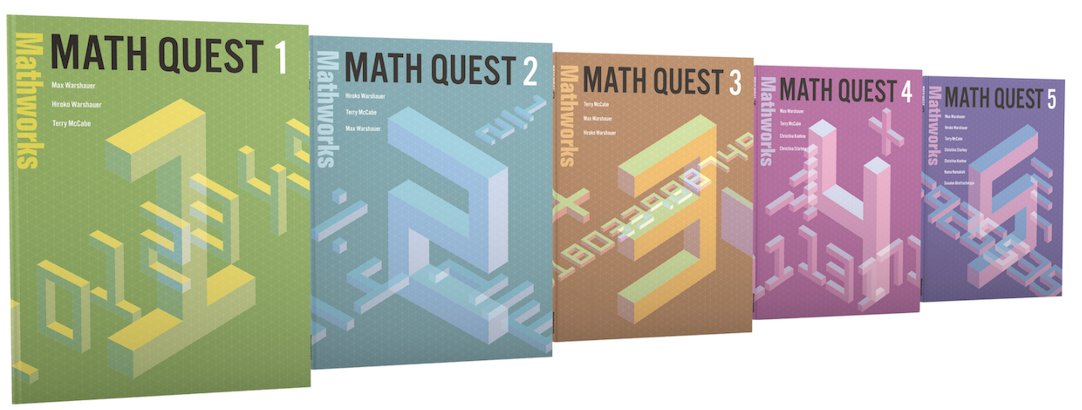Math Quest curriculum (used during the Junior Summer Math Camp - Half-Day program) is available for purchased. From a first-year program that introduces students to beginning concepts in algebra through play-acting and drama (dramathics), to a more advanced program in problem solving and discrete math, students enjoy exploring problems together and share in the excitement of mathematical exploration and discovery.
Which Math Quest class is right for my student? Remember that math is a subject that builds on itself and a strong foundation is very important. Sample problems for each book.

-
What topics are covered in Math Quest Level 1? (Recommended for Grades 3 - 4; Aligns to 6th grade TEKS))
- Exploring integers on the number line
- Building number lines
- Modeling elevation, temperature, and time with number lines
- Modeling addition on the number line
- Modeling subtraction on the number line
- Adding and subtracting large numbers
- Modeling problems algebraically
- Variables and expressions
- The chip mode
- Solving equations
- Solving equations on the number line
- Graphing on a coordinate plane
-
What topics are covered in Math Quest Level 2? (Recommended for Grades 4 - 5; Aligns to 7th Grade TEKS))
- Patterns, graphs, and table
- Graphing on the coordinate plane
- Functions and graphs
- Adding and subtracting integers (review)
- Multiplication of integers
- Functions
- Exploring fractions
- Modeling fractions
- Adding and subtracting fractions
- Multiplying fractions
- Equations with fractions
-
What topics are covered in Math Quest Level 3? (Recommended for Grades 5 - 6; Aligns to 8th Grade TEKS))
- Area and Perimeter Relationships
- Comparing Measurements of Rectangles
- Comparing Measurements of Right Triangles
- Lines, Slopes, and Intercepts
- Relating Coordinates of Points
- Equations of Lines
- Slopes and Intercepts
- Line Applications
- Multiplying Fractions and Revisiting Slopes
- Patterns and sequences
- Detecting and describing change
- Ratios and proportions
-
What topics are covered in Math Quest 4? (Recommended for Grades 6 - 8; High School TEKS)
- Counting
- Learn the basics of set theory
- Use different ways to describe a set
- Find the union, intersection, and complement of sets
- Draw a Venn Diagram to represent sets
- Find the sample space of an experiment
- Rule of Product and Rule of Sum
- Use tree diagrams and tables to model problems
- Derive the rule of product and rule of sum
- Permutations and Combinations
- Count the number of outcomes of an experiment
- Define a k-combination
- Compare combinations to permutations
- Probability and Sampling
- Simple and compound events
- Mutually exclusive events
- Successive events
-
What topics are covered in Math Quest Level 5? (Recommended for Grades 7 - 8, High School TEKS))
- Logical Reasoning
- Questioning Techniques
- Strategies
- Divisibility
- Number Theory
- Primes & Numbers of Divisors
- Divisibility
- Congruence
- Greatest common divisor and least common multiple
- Algebra
- Sequences
- Summations
- Variable Manipulation
- Ratio and rate applications
- Counting
- Rule of sum and rule of product
- Permutations and combinations
- Probability
- Geometry
- Areas of Triangles & Quadrilaterals
- Right triangles
- Scaling and similarity
